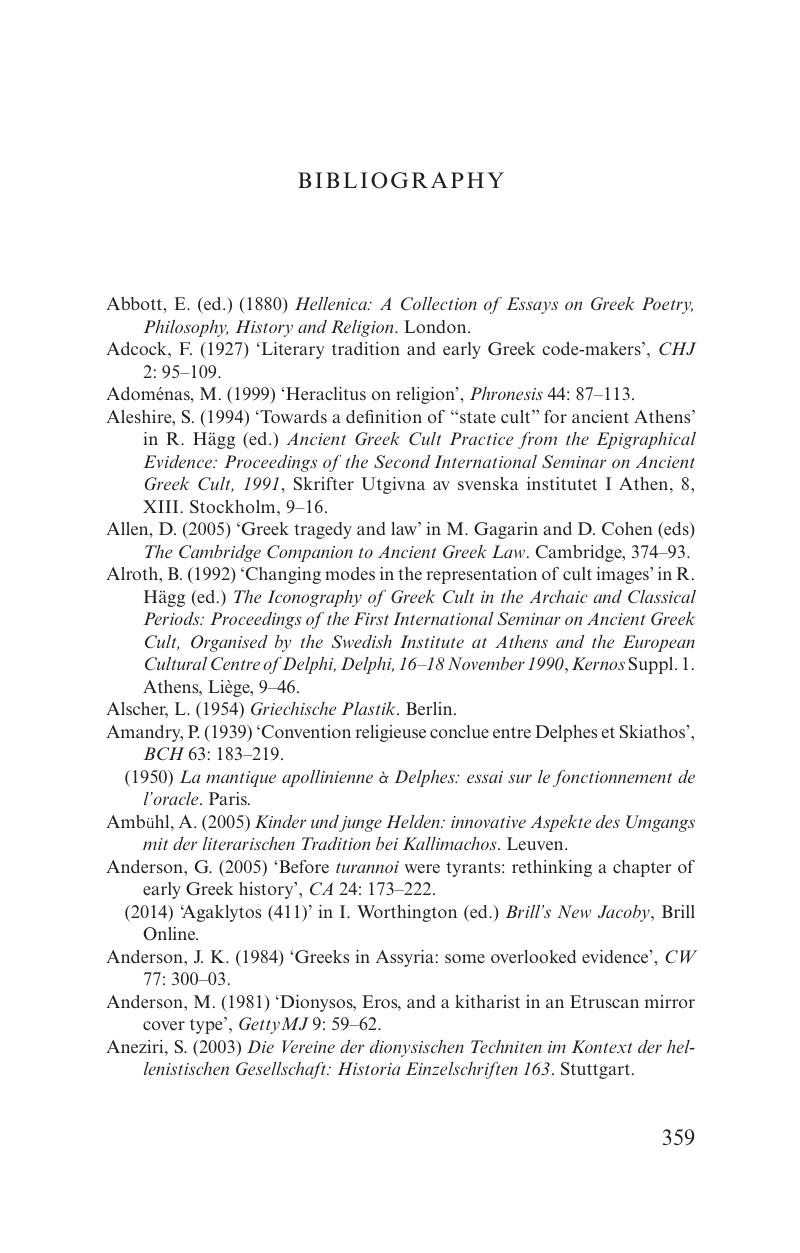Book contents
- theologies of ancient greek religion
- Cambridge Classical Studies
- Theologies of Ancient Greek Religion
- Copyright page
- Contents
- Figures
- Notes on contributors
- Preface
- Note on spellings and abbreviations
- Chapter 1 Introduction
- Chapter 2 The story of theology and the theology of the story
- Chapter 3 Theologies of the family in Homer and Hesiod
- Chapter 4 Who’s afraid of Cypselus?
- Chapter 5 Heraclitus on Apollo’s Signs and his own
- Chapter 6 The ‘theology’ of the Dionysia and Old Comedy
- Chapter 7 Polytheism and tragedy
- Chapter 8 Gods and men in ancient Greek conceptions of lawgiving
- Chapter 9 Popular theologies
- Chapter 10 Sacrificial theologies
- Chapter 11 Theologies of statues in Classical Greek art
- Chapter 12 The gods in the Athenian assembly
- Chapter 13 Plato and the secularisation of Greek theology
- Chapter 14 Providence and Religion in Middle Platonism
- Chapter 15 Narratives of continuity and discontinuity
- Bibliography
- Index
- References
Bibliography
Published online by Cambridge University Press: 05 August 2016
- theologies of ancient greek religion
- Cambridge Classical Studies
- Theologies of Ancient Greek Religion
- Copyright page
- Contents
- Figures
- Notes on contributors
- Preface
- Note on spellings and abbreviations
- Chapter 1 Introduction
- Chapter 2 The story of theology and the theology of the story
- Chapter 3 Theologies of the family in Homer and Hesiod
- Chapter 4 Who’s afraid of Cypselus?
- Chapter 5 Heraclitus on Apollo’s Signs and his own
- Chapter 6 The ‘theology’ of the Dionysia and Old Comedy
- Chapter 7 Polytheism and tragedy
- Chapter 8 Gods and men in ancient Greek conceptions of lawgiving
- Chapter 9 Popular theologies
- Chapter 10 Sacrificial theologies
- Chapter 11 Theologies of statues in Classical Greek art
- Chapter 12 The gods in the Athenian assembly
- Chapter 13 Plato and the secularisation of Greek theology
- Chapter 14 Providence and Religion in Middle Platonism
- Chapter 15 Narratives of continuity and discontinuity
- Bibliography
- Index
- References
Summary

- Type
- Chapter
- Information
- Theologies of Ancient Greek Religion , pp. 359 - 402Publisher: Cambridge University PressPrint publication year: 2016



